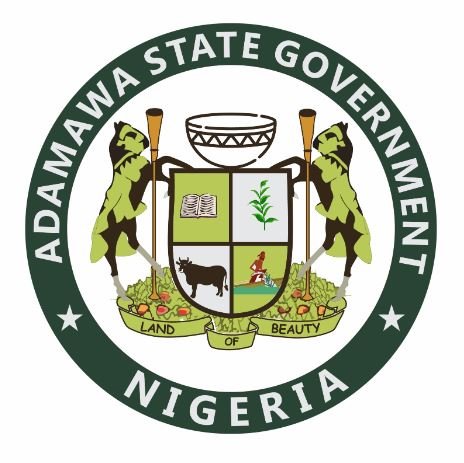The current population projection for Adamawa State in 2025 is approximately 5.2 million people. This represents a growth of about 6% from the estimated population of 4.9 million in 2022. However, the state has been experiencing a steady increase in population due to factors such as natural growth.
READ ALSO: Facts About Abia StatePopulation (2025)
How Has Adamawa State’s Population Changed Over The Years?
Abia State’s population has grown steadily over the years, looking back at the numbers, we can see how the population has changed over time. During the first census conducted in 1991 after the state’s creation, the population was recorded at 2,102,053.
Fifteen years later, in the 2006 census, the population had increased significantly to 3,178,950. This was a rise of about 51% compared to the 1991 figures.
The 2006 census also provided some detailed insights into the gender distribution of the population. It showed that there were approximately 1,606,101 males and 1,561,978 females.
By 2016, projections estimated that the population had grown to around 4.25 million. This represented a growth of about 34% since the 2006 census. However, the increase during this period was likely influenced by ongoing urban development and migration into the state.
Further projections in 2022 suggested that Abia State’s population had risen to about 4,902,100. Now, looking at 2025, the current estimates indicate that the population is expected to reach approximately 5.2 million. This means the state’s population will have grown by around 6% since 2022.
Adamawa State Population By Local Government
Here is the projected population for Adamawa State’s Local Government Areas (LGAs) in 2025:
| No | Local Government Area | Population Porjection (2025) |
|---|---|---|
| 1 | Demsa | 293,175 |
| 2 | Fufore | 344,800 |
| 3 | Ganye | 280,300 |
| 4 | Girei | 213,500 |
| 5 | Gombi | 243,300 |
| 6 | Guyuk | 290,800 |
| 7 | Hong | 279,400 |
| 8 | Jada | 277,300 |
| 9 | Lamurde | 183,800 |
| 10 | Madagali | 222,500 |
| 11 | Maiha | 181,500 |
| 12 | Mayo-Belwa | 251,300 |
| 13 | Michika | 255,300 |
| 14 | Mubi North | 244,800 |
| 15 | Mubi South | 213,500 |
| 16 | Numan | 150,300 |
| 17 | Shelleng | 244,300 |
| 18 | Song | 321,800 |
| 19 | Toungo | 85,800 |
| 20 | Yola North | 328,700 |
| 21 | Yola South | 323,500 |
The Demographics Of Adamawa State In 2025
Age Distribution
| Age Group | Percentage | Estimate Population |
|---|---|---|
| 0-14 years | 45% | 2,340,000 |
| 15-64 years | 50% | 2,600,000 |
| 65 years & older | 5% | 260,000 |
READ ALSO: Facts About Borno State Population In (2025)
Gender Distribution
| Gender | Percentage | Population Estimate |
|---|---|---|
| Female | 51% | 2,652,000 |
| Male | 49% | 2,548,000 |
Ethnic Composition
| Ethnic Group | Major Groups in the State |
|---|---|
| Fulani | Predominant ethnic groups in both rural and urban areas. |
| Bachama/Bata (Bwatiye) | Found mainly in Numan and Lamurde LGAs. |
| Huba (Kilba) | Primarily in Hong LGA. |
| Longuda | Found in Guyuk and Shelleng LGAs. |
| Margi | Predominantly in Madagali and Michika LGAs. |
| Higgi | Found in Michika and Mubi areas. |
| Hausa | Scattered across the state, especially in urban centers. |
| Mumuye | Found in Mayo-Belwa and Jada LGAs. |
| Bura | Found in Gombi and Song LGAs. |
Religious Composition
| Religion | Percentage |
|---|---|
| Sunni Muslims | 50% |
| Christians | 40% |
READ ALSO: Are All Countries In Africa Part Of The African Union?
Urban And Rural Population
| Area | Percentage | Population Estimate |
|---|---|---|
| Urban | 26% | 1,352,000 |
| Rural | 74% | 3,848,000 |
Socioeconomic Factors
Internally Displaced Persons (IDPs) and Returnees:
| Category | Estimated Number | Percentage of Total Population (%) |
|---|---|---|
| IDPs | 218,555 | ~4.2% |
| Returnees | 858,420 | ~16.3% |
Employment Sectors
| Sector | Percentage | Estimated Workforce |
|---|---|---|
| Agriculture | 70% | 3,640,000 |
| Trade/Commerce | 15% | 780,000 |
| Public Sector/Services | 10% | 520,000 |
| Construction | 3% | 156,000 |
| Manufacturing/Industry | 1.5% | 78,000 |
| Tourism | 0.5% | 26,000 |


ok thanks for that, but why don’t put yungur tribe in song l g a an yungur is hights population